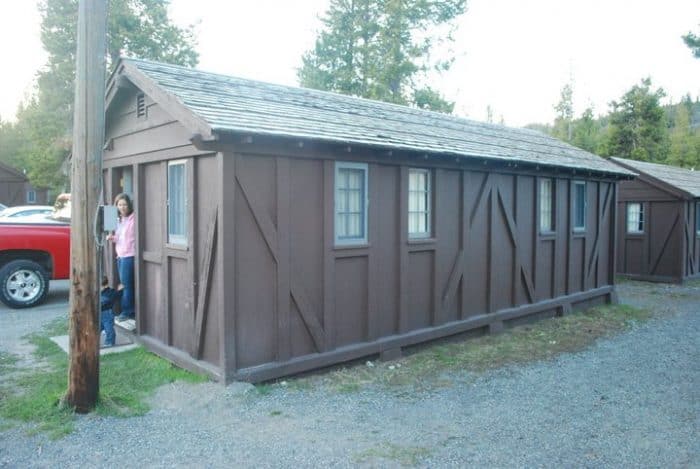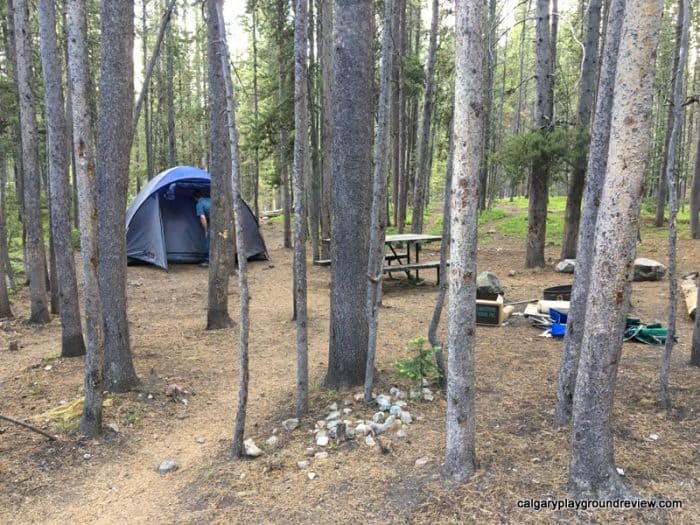We’ve travelled to US National Parks with our kids every year starting when our oldest was just over a year old. Our favourite National Park is Yellowstone and we’ve now been 10 times.

We’ve also been through Glacier several times as well as Devil’s Tower National Monument, The Tetons, the Bandlands National Park, Little Bighorn Battlefield, Bighorn Canyon and more. It is one of our favourite things to do on vacation.
Although each park is unique, there are some things to keep in mind that are common to many of them particularly if you are travelling with kids.

1. Passport Books
My first suggestion if you’re planning on visiting a few National Parks/Monuments on this trip or in the future is to get a small notebook to collect passport stamps. There is an official Passport Book which you can get at visitor centres. They are inexpensive (around $10US) but if you frequent the same areas you quickly run our of space so we prefer just a small blank notebook.
You can collect free ink stamps with the date and location at all the National Park visitor centres. Some places also have a unique stamp for the park (see picture below).

2. Visitor Centres
Don’t pass by the visitor centres. Each park and monument has a visitor centre (or more than one in the case of larger parks like Yellowstone) where you can get information, maps, guides, get your passport stamp, sign up for the Jr Ranger program, see educational exhibits as well as purchase souvenirs at the park association store.
At most of these store you can buy a membership to the association (for around $35). The parks all have different associations, but if you buy a membership for one, you can use your discount of $10-15% at most of the other association stores.

3. Jr. Ranger Program
Many of the National Parks and Monuments offer the Jr. Ranger Program. In this program, kids learn about science, history, art and nature through completing a series of activities and sharing their answers with the Ranger.

The goal is to help kids better appreciate what they are seeing by having material that helps them interact with it at their own level. The kids receive a booklet to complete with different levels required of kids of different ages. Upon completion the kids receive a patch or badge and a Jr. Ranger certificate or signed book. Many are completely free although some programs with more elaborate booklets (like Yellowstone) require a small fee (eg $3).

The starting age for the programs vary a little, some start as young as four but other parks want kids to be 6 or 7. Some parks even have a special book for kids who can’t yet read.

They want the kids to be able to understand the Jr Ranger oath to protect the area and plants and animals within it and do no harm as well as the activities themselves. There is no upper age range – even adults can complete the program if they wish.

My kids have loved doing the programs and complete as many as they can. Some can be easily done in a short trip but others may take a day or more to complete.

4. National Park Passes
Most areas will require you to purchase a park pass which costs $15-$35 and is usually good for a week. You can also purchase an annual pass for $80. There are some areas (such as Mount Rushmore) where a separate organization owns the parking area so you still need to pay for parking even if you have a pass.
It’s a good idea to price this out before your trip and consider where you may go over the rest of the year. One year I was surprised to find that even though we went to 2 national parks and 3 national monuments it was actually cheaper for us to not get the park pass. This summer we went to three National Parks and getting the park pass was the cheaper option.
5. Always Make Sure the Route you are Planning is Passable

Many of the parks are in very unique geographic areas and can have road conditions quite different from the surrounding area. The Going to the Sun Road in Glacier as well as many of the routes in Yellowstone are closed over the winter. The time of year at which they open can vary depending on the weather.
It is easy to think that you wouldn’t need to check the road conditions once you have hit June, however we were surprised to find the road out of Yellowstone through Cody, Wyoming was closed due to a slide and we had to amend our route when we got there. Construction within the parks can also alter your ideal routes. I wouldn’t travel to Yellowstone or Glacier again at any time of year without first checking the road conditions.
6. Accomodations
Some of the parks, such as Yellowstone and Glacier have cabins, lodges and campgrounds that you can stay at inside the park. We had assumed that these would be frightfully expensive but they are price controlled so at least in some cases they are actually cheaper than the hotels outside the park.
This does mean that they are not going to be as plush as they might be otherwise though. We stayed at a cabin in Yellowstone our 2nd year and it was quite small. It had a heater and a small fan, but it would probably be quite hot in the heat and cold in the cold. It did have its own bathroom with a shower but not all the cabins or even all the rooms at the lodge do.

There can also be campground options inside the park. We’ve now camped several times in Yellowstone with our three kids. In Yellowstone they have both bookable and walk up campsites with various amenities.

It is also good to note that in park accommodations fill up quickly so if you do want to stay inside the park, book ahead. It was challenging to find three days together in Yellowstone when we were booking in December. That being said if you are in a large park like Yellowstone, you may want to consider staying in different areas of the park to make it easier to access different parks of the park.
7. Read up on the area Before Going
Look around at the tourism websites for the area you are going as well as the national park website to find out about things you may want to see that aren’t quite as famous as Yellowstone or Mount Rushmore. There are a ton of cool hidden gems that you may not have heard about before but are totally worth a visit.

8. Keep your Plans Flexible
National Parks (and their parking lots) can be quite busy at peak times. Try to have a plan B in case your first choice is too busy. Similarly, leave room for the unexpected. Don’t get so stuck on your itinerary that you can’t stop and watch a surprise animal encounter or something else you didn’t plan for. Also, don’t forget to leave room for your kids to be kids. It’s easy to get caught up in seeing all the cool sights but they may most remember is walking on a log or jumping off stumps.


